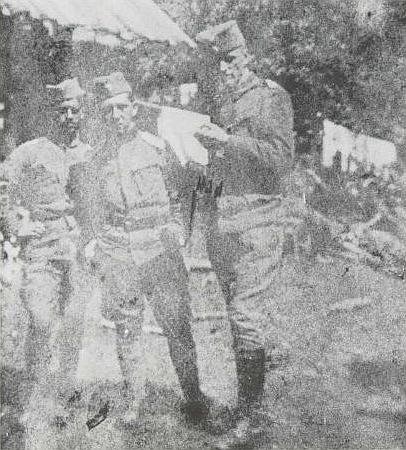
Veno Pilon associated with some of the most famous names on the Paris cultural scene. He sketched the likes of Pablo Picasso and Jean Paul Sartre, and photographed many emerging legends of the arts, including sculptor Ossip Zadkine and painter Giorgio de Chirico. A passionate artist himself, Pilon also became a prominent figure in the art gallery business in Paris.
Pilon was born in 1886, the son of a baker from the town of Ajdovščina, and came of age just as World War I was breaking out. He was captured by the Russians in the war and spent two years as a POW. It was during his time in Russia that he began to paint watercolors, and soon after his return home, he enrolled in art school. He studied both in Prague and Florence, but he never completed his studies. He continued to paint, however, and soon acquired contacts in the art world, which enabled him to participate in several exhibitions. (Mostly in Italy, since his avant-garde style received a lukewarm response in Slovenia.) He also regularly took the time to help his father with the family bakery.
But it was Paris that captured Pilon’s imagination after he made a brief visit to the City of Light. In 1928, shortly after the death of his father, Pilon permanently moved to Paris. He married there and had a son, Dominique. He continued to paint, but without strong connections in the art world, he realized that he had to find other work, and he supported his family as a photographer in a studio run by a Polish immigrant.
When World War II broke out, Paris was occupied by the Nazis, and Pilon moved back to Slovenia. After the war, he joined the crew of the movie On Our Own Land (Na svoji zemlji), the first feature film in the Slovenian language. He was responsible for the movie’s cinematography, makeup and art design.
Pilon returned to France full-time in 1949. It wasn’t a simple return. He was arrested upon arrival because he had let his visa expire. With the help of his French wife, he finally got his papers in order, but from then on, he had to renew his residence status every three years.
His return was the start of an especially busy and creative period of his life. He became the representative of the Swiss publisher Nesto Jacometti and headed his art publishing activities. He photographed many renowned artists living in Paris. Pilon also helped to organize exhibitions, while maintaining strong ties with emerging Slovenian artists. He served as a bridge between the Slovenian and the French art worlds, helping several Slovenians to exhibit abroad, and translated Slovenian poetry into French.
A few years after the death of his wife, Pilon returned to his native Ajdovščina and lived in a modest apartment given to him by the state.
Pilon died on September 23, 1970, a day after his birthday. The town of Ajdovščina declared a day of mourning. Not long afterward, his son Dominique donated Pilon’s works to the people of Ajdovščina. The donation is now the basis for the Pilon Galery, where visitors can see various works of a man who truly lived 20th century art.

































































